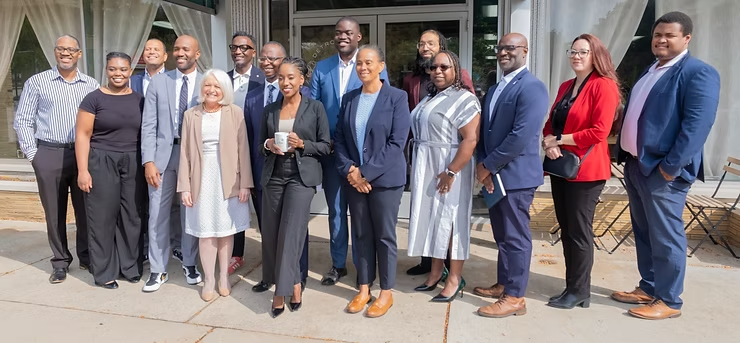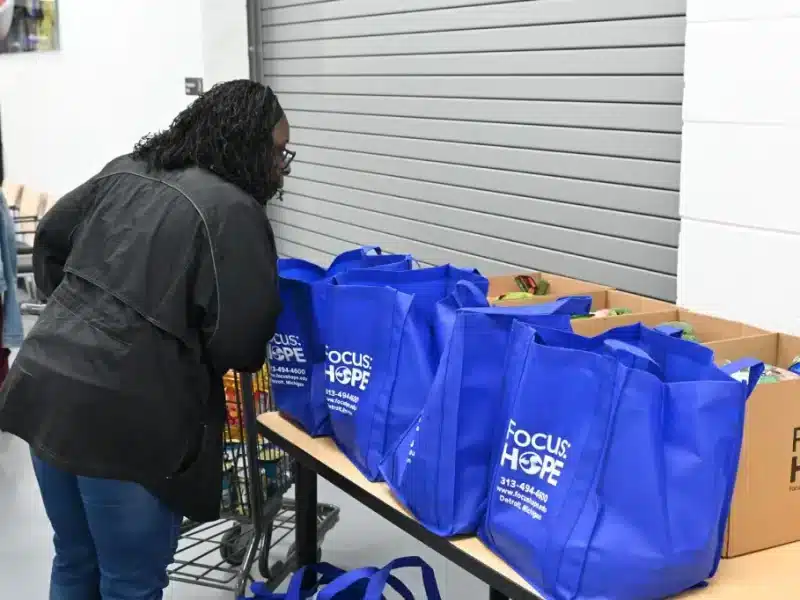Hurley Hospital: A Beacon of Hope in Reducing Infant Mortality
Michigan Council for Maternal and Child Health (MCMCH) has been working to enhance the well-being of mothers and infants, collaborating with hospitals to reduce infant mortality rates. Hurley Medical Center is a successful example of this work.
The Yours, Mine, and Ours — Public Health series highlights how our state’s public health agencies keep us healthy, safe, and informed about issues impacting physical and mental health in our communities, homes, workplaces, and schools. The series is made possible with funding from the Michigan Association for Local Public Health.

For nearly 40 years, the Michigan Council for Maternal and Child Health (MCMCH) has been at the forefront of the state’s public health policy advocacy, working to enhance the well-being of mothers and their children. Part of their work involves collaborating with hospitals to understand their needs for reducing infant mortality rates. Amy Zaagman, MCMCH executive director, recognizes Hurley Medical Center’s approach to maternal and infant care as a prime example of how health care institutions can profoundly impact communities.
“We have a long history with Hurley hospital,” she says. “They are a great example of so many things that we advocate for, and we’ve learned a lot from them.”
One example is Hurley Medical Center’s role in reducing infant mortality rates, an issue that has long plagued Michigan.
Michigan Council for Maternal and Child Health: Advocating for mothers and children

While the state’s overall infant mortality rate mirrors the national average, the alarming discrepancies in outcomes for African American and Indigenous infants demand urgent attention. Zaagman says MCMCH is committed to addressing these disparities.
“There’s been over $100 million in new funding in the maternal and infant health space,” she says. “Some of that has gone towards funding an extension to Medicaid postpartum coverage from sixty days to twelve months.”
And that’s just one example. Currently, there are more than 20 bills introduced in the state legislature to try and improve maternal and infant health.
Legislative efforts and new funding initiatives
Hurley Medical Center served as inspiration for many of those bills, from pioneering initiatives like the Centering Pregnancy Program to embracing home visiting services and specialized care for substance-exposed infants. Hurley Medical Center has set a high standard for maternal and infant health care.
“Hurley is constantly looking for those partnerships and embracing those commitments, partnering with anyone who will partner to make good things happen,” says Zaagman.
Hurley’s holistic approach, along with a deep-rooted commitment to community engagement, underscores their dedication to the health of mothers and babies in Michigan.
Rooming-In Program: A model for maternal and infant care
One of the ways Hurley Medical Center is improving maternal and infant health is through their Rooming-In Program. The program keeps moms and their substance-exposed babies together in a quiet room until the baby recovers. This allows for bonding between mom and baby and reduces stress on the baby while they are recovering from detox. Zaagman says it’s not just the programming that’s innovative; it’s the way Hurley finds funding for these programs, either through grants or community partnerships. That process allows Hurley to fast-track programs and influence care in other hospitals across the state.
“They show it works,” Zaagman says. “We learn from them that these types of programs make a difference, and then we approach the legislature and say we need funding so we can make this available to other hospitals.”
It’s how MCMCH was able to help secure $1.3 million for rooming-in programs at five birthing hospitals in the state using opioid settlement dollars awarded to Michigan.

Collaborative efforts towards reducing infant mortality
As Zaagman highlights, Hurley’s success serves as both an inspiration and a call to action for other health care providers. By sharing best practices and advocating for resources, MCMCH aims to catalyze similar transformations across the state. Through strategic partnerships and evidence-based policies, MCMCH strives to create a system where every mother and child receives the care and support they deserve.
Reducing infant mortality takes more than just funding. Zaagman emphasizes the need for sustained investment, cultural transformation, and a commitment to equity.
“We have to build all of the programming and the resources up, and then we have to change the culture,” she says. “We really have to allow families of color to believe that those things will be there and that they’re structured in such a way that they’re welcoming and available.”
It’s the collective efforts of public health organizations like the MCMCH and institutions like Hurley Medical Center that continue to push for change when it comes to improving infant mortality rates.
“They’re doing the extra work. They’re doing group-based prenatal care. Working with substance-exposed infants. They’re doing home visits. They’re making every connection,” says Zaagman.
Continuing the mission: Goals for the future
There is still work to be done. In the future, Zaagman says she would like to see more emphasis on mother-baby programs, especially those that reach BIPOC communities. The MCMCH is currently working on a project with the Michigan Health and Hospital Association interviewing Black women who birthed at three different Michigan hospitals. The goal is to see what policy changes may come from their experiences.
As Michigan’s public health entities continue on the journey towards improved infant mortality rates, the MCMCH remains committed to pushing for policy changes so that mothers and babies in communities across the state can get the health care they need.
Valerie Lego has been reporting on health and lifestyle stories in West Michigan for 18 years. Her health reporting credentials include fellowships from the National Institutes of Health, Centers for Disease Control and Prevention (CDC), and the Association of Health Care Journalists.
Photos by Yung Saac and William Fortunato via Pexels.com. Amy Zaagman photo courtesy subject.
The Yours, Mine, and Ours — Public Health series highlights how our state’s public health agencies keep us healthy, safe, and informed about issues impacting physical and mental health in our communities, homes, workplaces, and schools. The series is made possible with funding from the Michigan Association for Local Public Health.




